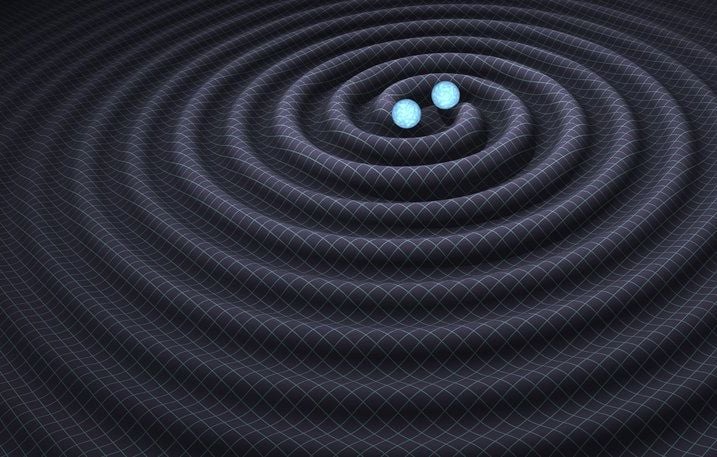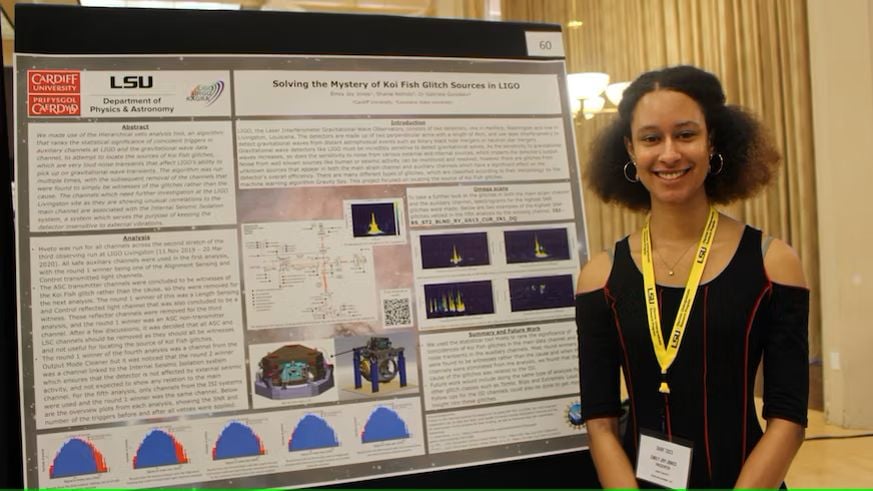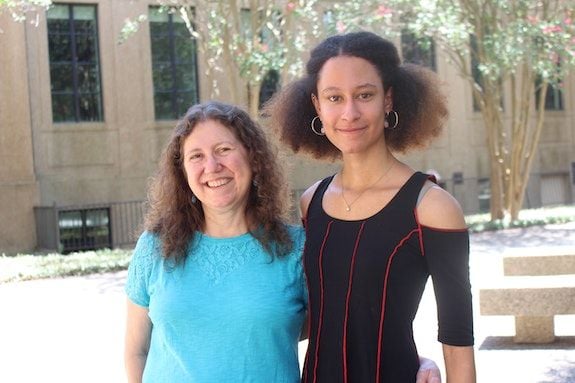A Cardiff University undergraduate has collaborated with academics from the US on a project to improve gravitational waves detectors at the Laser Interferometer Gravitational-Wave Observatory (LIGO) as part of a summer research placement.

Rendered image showing gravitational waves. Image credit: LIGO/Caltech
Emily Joy Jones, Em.J, who is in the final year of her Astrophysics (MPhys) degree at Cardiff University’s School of Physics and Astronomy, conducted research over a period of 10 weeks at Louisiana State University (LSU) in the US.
Working with the LIGO detector characterization team, Em.J helped locate koi fish glitch sources – a specific type of glitch, classified according to their morphology by a machine learning algorithm called Gravity Spy.
Em.J said: “This was a really exciting project that has taught me so many new physics skills.
“For example, I ran a tool called Hierarchical Veto on data from LIGO’s third observing run to try to locate which of the hundreds of auxiliary channels at LIGO Livingston were related to the glitches.
“I also produced Omega scans containing time series plots and spectrograms of the loudest glitches from each analysis to get a better understanding of the nature of these glitches.”

Astrophysics undergraduate Em.J presented the findings from her summer research placement at a poster exhibition at a Louisiana State University research forum. Image credit: Cardiff University
During the placement Em.J, whose science superhero is Stephen Hawking, was supervised by Professor Gabriela González, one of four high-profile speakers invited to share the stage with Stephen Hawking at his 75th birthday public symposium in 2017.
Hawking also invited Professor González to present at an international scientific conference entitled ‘Gravity and Black Holes’ at the Centre for Mathematical Sciences at Cambridge University.
“I was lucky to have Em.J working with our group this summer,” said Professor González.
“She helped us in a very challenging project and we will be using her conclusions to improve the detection of gravitational waves with LIGO detectors.
“I am looking forward to crossing paths often with her in the future!”

Professor Gabriela González (L) supervised Em.J (R) during her research placement at Louisiana State University. Image credit: Cardiff University
The summer placement was an opportunity for Em.J to get hands-on experience in the field and attend her first academic conference.
“I think LSU is a great place!” she said.
“The campus is beautiful and there are so many different types of people that I got to meet. This goes too for Baton Rouge as a city, and it felt great to finally see the Mississippi River with my own eyes.
“I’ve enjoyed trying lots of new types of food that I’ve never had before! This was also my first time in the US, so learning about the culture here was really fun.”
Following graduation, Em.J is hoping to study for a PhD in engineering or astrophysics and plans to work in a science, technology, engineering, and mathematics (STEM) related field.
Source: Cardiff University

